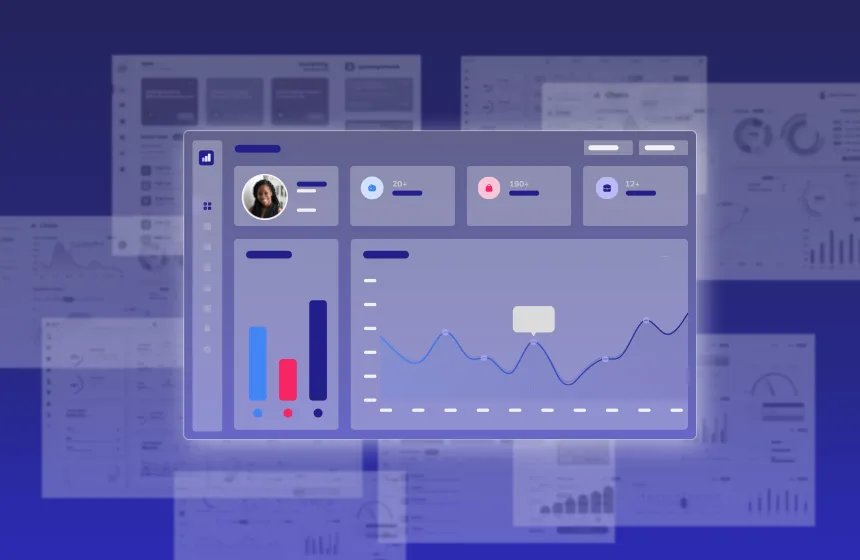Accelerate deals and increase win rates with the leading enterprise AI demo platform.
The Minimalist’s Sales Tech Stack: The Only Must-Have Revenue Tools

August 14, 2025
Table of Contents
Every sales department is being squeezed right now. Budgets are tight, and you’re probably being told to cut tools, not add them.
The problem? Most sales tech stacks are bloated messes. Teams chase shiny new tools without asking if they actually need them.
Done right, the sales tech stack can be a force multiplier. But done haphazardly — chasing the latest trends or unproven tech — you can end up with an expensive, cobbled-together toolkit that doesn’t deliver.
That’s why we’ve put together The Minimalist’s Sales Tech Stack.
We’ll cover every major category of the sales tech stack, highlight the top players in each category and what features to look for, and help you decide which tech makes sense for your organization.
Let’s dive in!
What Is a Sales Tech Stack?
A sales tech stack is whatever collection of software a sales team uses. Those tools are likely connected with each other. The tech stack spans the entire sales cycle: prospecting, outreach, demos, closing, and post-sale handoff.
Your tech stack should be integrated, secure, and automated where it makes sense. Beyond that, stick to three rules:
- Only proven tech — Skip the shiny new tools
- Only daily-use tools — If you don’t use it regularly, cut it
- Strategic AI integration — Don’t add AI just because it’s trendy
When done right, you get better pipeline visibility, faster deal cycles, stronger buyer experiences, and easier onboarding for new reps.
The goal is simple: empower your reps to sell more efficiently and personally.
The 10 Essential Categories
We’ve evaluated the tools that show up in high-performing sales organizations. Below are the core components that show up again and again, and for each category we’ll help you decide what makes sense for your situation.
1. Customer Relationship Management (CRM) Software
A CRM is the backbone of your sales tech stack. It’s where every lead, account, contact, and opportunity is tracked. If it didn’t happen in the CRM, it didn’t happen.
Top tools: Salesforce, HubSpot, Zoho CRM, Microsoft Dynamics 365
Pros: Single source of truth, revenue tracking, pipeline management
Cons: Expensive, weak out-of-the-box reporting, requires constant data hygiene
Our take: Every sales organization needs a CRM. It’s non-negotiable. But take a close look at your usage. Cut unclaimed licenses and unused features (you’d be surprised how many Salesforce apps you’re paying for but not using). Switching CRMs is painful and expensive, so unless you’ve clearly outgrown your current system, focus on optimizing what you have rather than starting over.
2. Sales Outreach Platforms
Sales engagement tools help reps automate outreach, manage cadences, and track responses without sacrificing personalization. These platforms ensure follow-ups never fall through the cracks.
Top tools: Outreach, Salesloft, Groove
Budget alternatives: Smartlead.ai, Reply.io
Pros: Consistent outreach, automated sequences, engagement tracking
Cons: Can be expensive, steep learning curve, risk of spammy messaging
Our take: These tools make sense if you’re doing any kind of scaled outbound prospecting. If your team is spending significant time on manual follow-ups or struggling to stay organized with prospect communication, an outreach platform will pay for itself quickly. However, if you’re primarily focused on inbound leads or have a very small sales team, you might get by with basic email templates and calendar reminders.
3. Interactive Demo Software
This is where deals are won or lost. You can have the best product in the world, but if your reps can’t show it off effectively, you’re leaving revenue on the table.
Top tools: Reprise, Loom, plus traditional slides
Pros: Enables reps to show vs. tell, personalizes the buying experience, saves engineering time, scales across teams
Cons: Some legacy tools lack interactivity, low adoption if reps aren’t trained
Our take: Demo tools are essential if you’re selling a complex product that benefits from interactive exploration. They’re particularly valuable for SaaS companies, technical products, or anything where seeing the product in action dramatically improves conversion rates. If your product is simple or service-based, you might not need specialized demo software.
4. Conversation Intelligence Tools
These tools record, transcribe, and analyze sales calls, giving managers visibility and reps actionable insights.
Top tools: Gong, Chorus (by ZoomInfo)
Budget alternatives: Avoma, Attention
Pros: Customer insights and trends, coaching and onboarding support, captures data often lost in calls
Cons: Expensive for larger teams, potential information overload, CRM integration can be finicky
Our take: Call recording and analysis tools are most valuable for organizations with complex sales cycles, high-stakes deals, or teams that need significant coaching support. If you’re managing a large sales team or selling enterprise deals where every conversation matters, these tools will provide clear ROI. Smaller teams selling straightforward products might find the cost hard to justify, especially if managers can easily shadow calls directly.
5. Proposal and Quote Tools (CPQ)
CPQ software helps reps create accurate, customized proposals fast. It reduces errors and ensures consistent pricing.
Top tools: PandaDoc, DocuSign CPQ, DealHub
Pros: Automates quoting and approval processes, reduces human error, ensures pricing consistency
Cons: Significant setup time, often overkill for simpler deals, may duplicate CRM functionality
Our take: CPQ tools shine when you’re dealing with complex pricing structures, multiple product configurations, or lengthy approval processes. They’re particularly valuable for any business with intricate pricing models. If you’re selling straightforward products with simple pricing, your CRM’s built-in quoting features or basic proposal templates might be sufficient.
6. Project and Workflow Management
Track internal coordination across complex sales. Whether you’re managing plays, requests, or handoffs, workflow tools help you stay aligned.
Top tools: Asana, Jira, Trello
Pros: Cross-functional alignment, organized initiatives
Cons: Another tool for reps to manage, often redundant with CRM, not built for sales workflows
Our take: These tools make sense if your sales process involves significant cross-functional coordination. Think enterprise deals with multiple stakeholders, custom implementations, or complex technical evaluations. For most sales teams, however, a well-configured CRM handles task management adequately. Adding separate project management tools often creates more confusion than clarity unless you’re managing truly complex, multi-month sales processes.
7. Enablement and Training Software
Enablement platforms centralize onboarding and playbooks for faster ramp times.
Top tools: Highspot, Guru, Mindtickle
Pros: Centralized content, faster onboarding, updated messaging
Cons: Low adoption if not valuable, overlaps with existing tools
Our take: Dedicated enablement platforms work best for larger organizations with complex products, frequent updates, or high rep turnover. If you’re constantly onboarding new team members or have intricate product knowledge that needs regular updates, these tools provide structure and efficiency. Smaller teams or those with stable products might find that shared drives, internal wikis, or simple documentation tools meet their needs without the added complexity and cost.
8. Lead Intelligence and Prospecting Tools
Prospecting tools help you build lists, gather contact info, and trigger outreach. In other words, find better leads, faster.
Top tools: ZoomInfo, Clearbit, Cognism
Budget alternatives: Apollo.io, Lusha, LeadIQ
Pros: Better lead targeting, automatic data enrichment, improved segmentation
Cons: Expensive, especially for small teams, potential tool redundancy
Our take: These tools are essential if outbound prospecting is a significant part of your sales strategy. They’re particularly valuable for teams targeting specific industries, company sizes, or roles where accurate contact data makes the difference between success and wasted effort. If you’re primarily focused on inbound leads or have a well-established referral network, the investment might be harder to justify.
9. RFP and Security Review Tools
When your deals hit procurement, RFP and Security Review tools help technical sellers respond faster without scrambling for answers.
Top tools: Loopio, RFPIO, SecurityPal
Pros: Faster responses, consistent answers, searchable content libraries
Cons: Another tool to manage, less relevant for smaller deals
Our take: These tools are game-changers if you regularly deal with enterprise procurement processes, security questionnaires, or formal RFPs. They’re particularly valuable for companies selling into highly regulated industries or large enterprises where compliance documentation is standard. If your deals rarely involve formal procurement processes or security reviews, you’re probably better off managing responses manually or with simple document templates.
10. Revenue Intelligence and Forecasting Tools
Analyze pipeline data for better forecasting and deal insights. These tools collect data from across your sales tech stack and turn it into actionable intelligence.
Top tools: Clari, InsightSquared, Aviso
Pros: Pipeline visibility, forecasting accuracy, early risk detection
Cons: Expensive for startups, still depends on quality data input
Our take: Revenue intelligence tools provide the most value for scaling organizations with complex sales motions and multiple management layers. If you’re managing a large team, have lengthy sales cycles, or need to provide accurate forecasts to investors or executives, these tools can dramatically improve your predictability. Early-stage startups or small teams might find that their CRM’s built-in reporting provides sufficient insights without the additional cost and complexity.
What to Consider Before Building Your Stack
Every business is different, and your tech stack should reflect your specific goals, team size, and sales motion. Here are the key questions to ask before investing in new tools:
- Team Size and Structure: Small teams benefit from all-in-one solutions, while larger organizations can handle specialized point solutions. Be realistic about how many tools your team can effectively manage and adopt.
- Integration Requirements: Tools that don’t communicate create manual work and data silos. Prioritize platforms that integrate cleanly with your existing systems, especially your CRM.
- Sales Process Complexity: Map your buyer journey from prospecting to handoff. Simple, transactional sales need fewer tools than complex, enterprise deals with multiple stakeholders and lengthy evaluation periods.
- User Experience: The best tool is the one your reps actually use. If a solution adds friction or complexity without clear benefits, it won’t get adopted regardless of its theoretical value.
- Return on Investment: Map out the potential ROI of each solution: time saved, deals accelerated, or revenue increased. Be willing to cut tools that aren’t delivering measurable value.
The Bottom Line
Your sales tech stack doesn’t need to be impressive — it needs to be effective. The most successful stacks are lean, integrated, and built around actual workflows rather than theoretical ideals. Start with what your reps use daily, then build thoughtfully from there. Remember, every tool should:
- Solve a real problem
- Integrate with your systems
- Improve efficiency or revenue
The right stack won’t just help you hit quota. It’ll help your team scale sustainably without drowning in complexity.
Looking for the most modern way to demo your product?
Learn more about Reprise and how we fit into the best sales tech stacks out there.
FAQs
How do I evaluate which tools are worth the investment?
Start by identifying your biggest sales pain points, then find tools designed to solve them. Prioritize ROI, user adoption, and how well the tool integrates with your existing systems.
How do I get team buy-in for new sales software?
Involve key reps in the evaluation process early. Run a pilot, collect feedback, and clearly communicate how the tool will make their job easier or help them hit quota faster.
What’s the average number of tools in a sales tech stack?
Most sales orgs use between 8-15 tools regularly, depending on team size and complexity. Simpler stacks are easier to manage, but best-in-class teams choose tools that match each stage of their sales motion.






